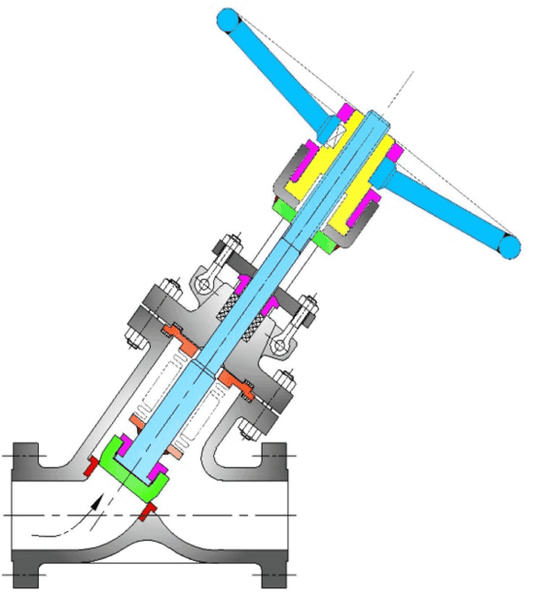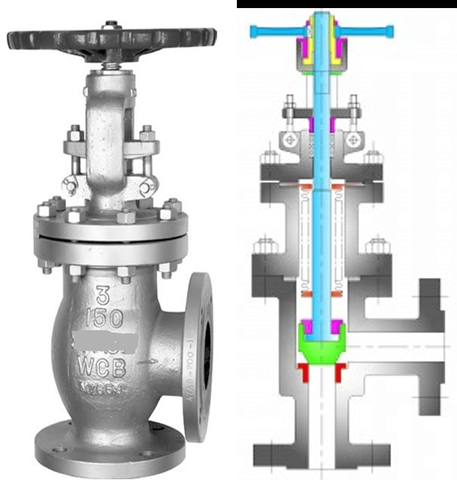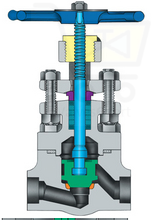Globe Valves Education
Globe Valve
Globe valves are a highly common valve in the process industry. They be used for on/off applications, but are generally used for precise throttling applications. Globe valves have a greater pressure drop across the valve then other of valves. This pressure drop occurs, due to a 90 degree turn, the process must flow through within the valve.
.
Globe Valves contain a few moving parts such as the disk, the valve stem, and the hand wheel. The stem connects the hand wheel and the disk. It is threaded and fits into the threads on the valve bonnet. The location of the valve disk in relation to the valve’s seat, allows or restricts flow. The direction of the fluid flow through the valve will change several times, which increases the pressure drop across the valve. In most cases, globe valves are installed with a stem vertical, and the higher pressure fluid stream connected to the pipe side below the disk. This allows the disk to evenly disperse the fluid flow.
Disc Styles
The most four common types are plugs, balls, compositions, and needles. The plug type is best for throttling and wide temperature and pressure ranges. It also comes with renewable seat rings, on a cone shaped surface. The ball components are best for on/off applications and minimal throttling. The ball would rest in a beveled, ball-shaped, or flat surface. The composition class is replaceable, and can be used with a variety of flow rates and temperatures. A rubber ‘O’ ring, or a washer, is used for the seating surface. And for instances when very small amounts of throttling are necessary, a needle disc is used.
Globe body Valve designs
1. Z-Body Design
.
- The simplest design
- Most common for water applications
- A symmetrical form that simplifies manufacture, installation, and repair.
2. Y-Body Design

- This design is a remedy for the high pressure drop inherent in globe valves.
- The seat and stem are angled at approximately 45
- The angle yields a straighter flow path (at full opening) and provides the stem, bonnet, and packing a relatively pressure-resistant envelope-body globe valves are best suited for high pressure and other severe services.
- In small sizes for intermittent flows, the pressure loss may not be as important as the other considerations favoring the y-body design.
3. Angle valve
.

- Simple modification of basic globe valve
- Both function as valve and piping elbow.
- Fluid is able to flow through a single 90 degree turn
Disadvantages of Globe valves
- The most evident shortcoming of the simple globe valve is the high head loss from two or more right angle turns of flowing fluid. Obstructions and discontinuities in the flow path lead to head loss. In a large high-pressure line, the fluid dynamic effects from pulsations, impacts, and pressure drops can damage trim, stem packing, and actuators
- Large valve sizes require considerable power to operate
- Especially noisy in high pressure applications.
- Large openings necessary for disk assembly, heavier weight than other valves of the same flow rating, and the cantilevered mounting of the disk to the stem.


